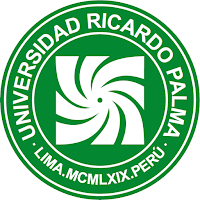Thematic and Expressive Constants Between The Black Heralds and the Rest of Vallejo’s oeuvre
Thematic and Expressive Constants Between The Black Heralds and the Rest of Vallejo’s oeuvre Thematic and Expressive Constants Between The Black Heralds and the Rest of Vallejo’s oeuvre
Article Sidebar
Main Article Content
Antonio González Montes
Abstract
Considering that the entire written work by César Vallejo has been read and analyzed by national and international literary criticism, we propose to highlight the importance of The Black Heralds (1919) in the whole of this work and underline the thematic and expressive constants between the aforementioned collection of poems and Vallejiana production in verse and prose, literary, academic and journalistic. In this work I will use the category of intertextuality to establish with precision and in a well-founded way the connections that exist between the 1919 book and the works that the author published in life and those that have been published posthumously, signifivantly increasing his literary corpus. As appropriate, I will consult exhaustively the relevant bibliography about this topic.
Article level metrics
Downloads
Metrics
Article Details

This work is licensed under a Creative Commons Attribution 4.0 International License.
La revista utiliza una licencia Creative Commons para mostrar a los lectores y a los usuarios cómo se pueden utilizar los contenidos publicados.
Los contenidos publicados en la revista están bajo una licencia CC-BY 4.0, la cual permite:
- Compartir, copiar y redistribuir el material en cualquier medio o formato.
- Adaptar, remezclar, transformar y construir a partir del material para cualquier propósito, incluso comercialmente.
Bajo los siguientes términos:
- Atribución. Usted debe dar crédito de manera adecuada, brindar un enlace a la licencia, e indicar si se han realizado cambios. Puede hacerlo en cualquier forma razonable, pero no de forma tal que sugiera que usted o su uso tienen el apoyo de la licenciante.
La información de licencia se muestra e incrusta en las páginas de artículos y en ficheros de texto completo como sigue:
«Este obra está bajo una licencia de Creative Commons Reconocimiento 4.0 Internacional».
Flores Heredia, Gladys (2018). La tesis de César Vallejo: El Romanticismo en la poesía castellana (1915). Propuesta de edición crítica. Tesis para optar el grado de doctora en Literatura Peruana y Latinoamericana. Lima: Universidad Nacional Mayor de San Marcos.
González Montes, Antonio (1969). César Vallejo. Biografía. Lima: Editorial Studium.
________ (2002). Escalas hacia la modernización narrativa. Lima: Fondo Editorial de la Universidad Nacional Mayor de San Marcos.
________ (2014). Introducción a la narrativa de Vallejo. Lima: Cátedra Vallejo.
________ (2018). «Vallejo y España». Archivo Vallejo. Revista de Investigación del Centro de Estudios Vallejianos, 1, 1, 225-252.
González Vigil, Ricardo (1988). Leamos juntos a Vallejo. Los heraldos negros y otros poemas juveniles. Lima: Banco Central de Reserva. ________ (2009). Claves para leer a César Vallejo. Lima: San Marcos.
Hart, Stephen M. (2014). César Vallejo. Una biografía literaria. Lima: Cátedra Vallejo.
Higgins, James (1989). César Vallejo en su poesía. Lima: Seglusa Editores.
Kishimoto, Jorge (1993). «Vallejo y la Bohemia de Trujillo». En González viGil, Ricardo (ed.) (1993). Intensidad y altura de César Vallejo. Lima: Fondo Editorial de la Pontificia Universidad Católica del Perú.
Mariátegui, José Carlos (1928). Siete ensayos de interpretación de la realidad peruana. Lima: Editorial Amauta.
Monguió, Luis (1952). César Vallejo (1892-1938): vida y obra. Lima: Perú Nuevo.
Orrego, Antenor (2018). El sentido americano y universal de la poesía de César Vallejo. Edición, prólogo y notas de Ricardo Silva-Santisteban. Lima: Cátedra Vallejo.
Silva-Santisteban, Ricardo (1999). «La narrativa de César Vallejo». En Vallejo, César. Narrativa completa. Lima: Pontificia Universidad Católica del Perú, XIII-XXXI.
Vallejo, César (1915). El Romanticismo en la poesía castellana. Trujillo: Tipografía Olaya.
________ (1991). Obras completas. Tomo I: Obra poética. Edición crítica, prólogo, bibliografía e índices de Ricardo González Vigil. Lima: Banco de Crédito del Perú.
________ (1999). Narrativa completa. Lima: Pontificia Universidad Católica del Perú.
________ (2012). Poesía completa. Nueva edición, actualizada y aumentada, de Ricardo González Vigil. Lima: Ediciones Copé.
Most read articles by the same author(s)
- Antonio González Montes, Vallejo y España (1925-1938) , Archivo Vallejo: Vol. 1 No. 1 (2018): January - June
- Antonio González Montes, Reading Trilce like reading Rayuela , Archivo Vallejo: Vol. 5 No. 10 (2022): July - December
Similar Articles
- Antonio González Montes, Reading Trilce like reading Rayuela , Archivo Vallejo: Vol. 5 No. 10 (2022): July - December
You may also start an advanced similarity search for this article.










